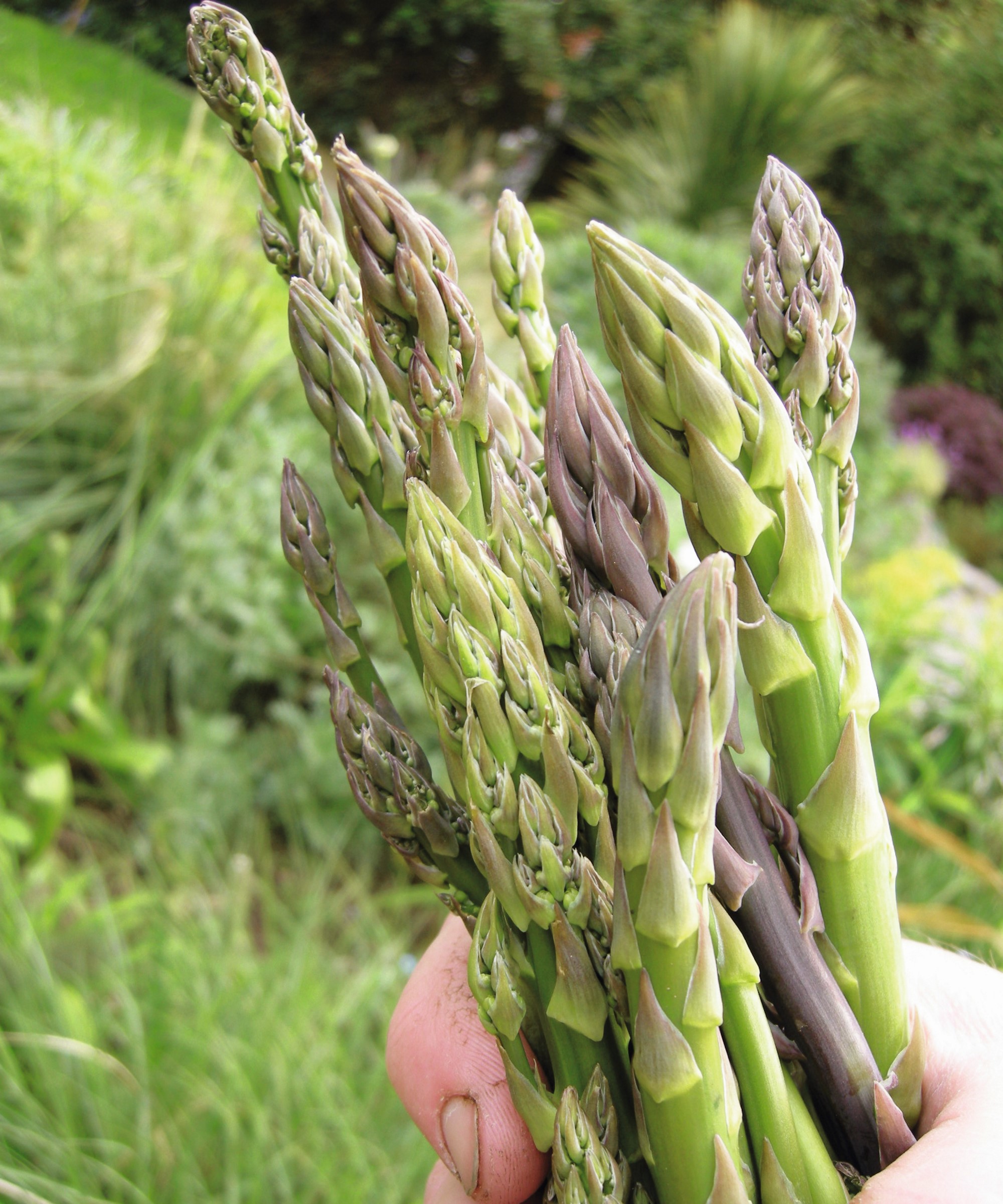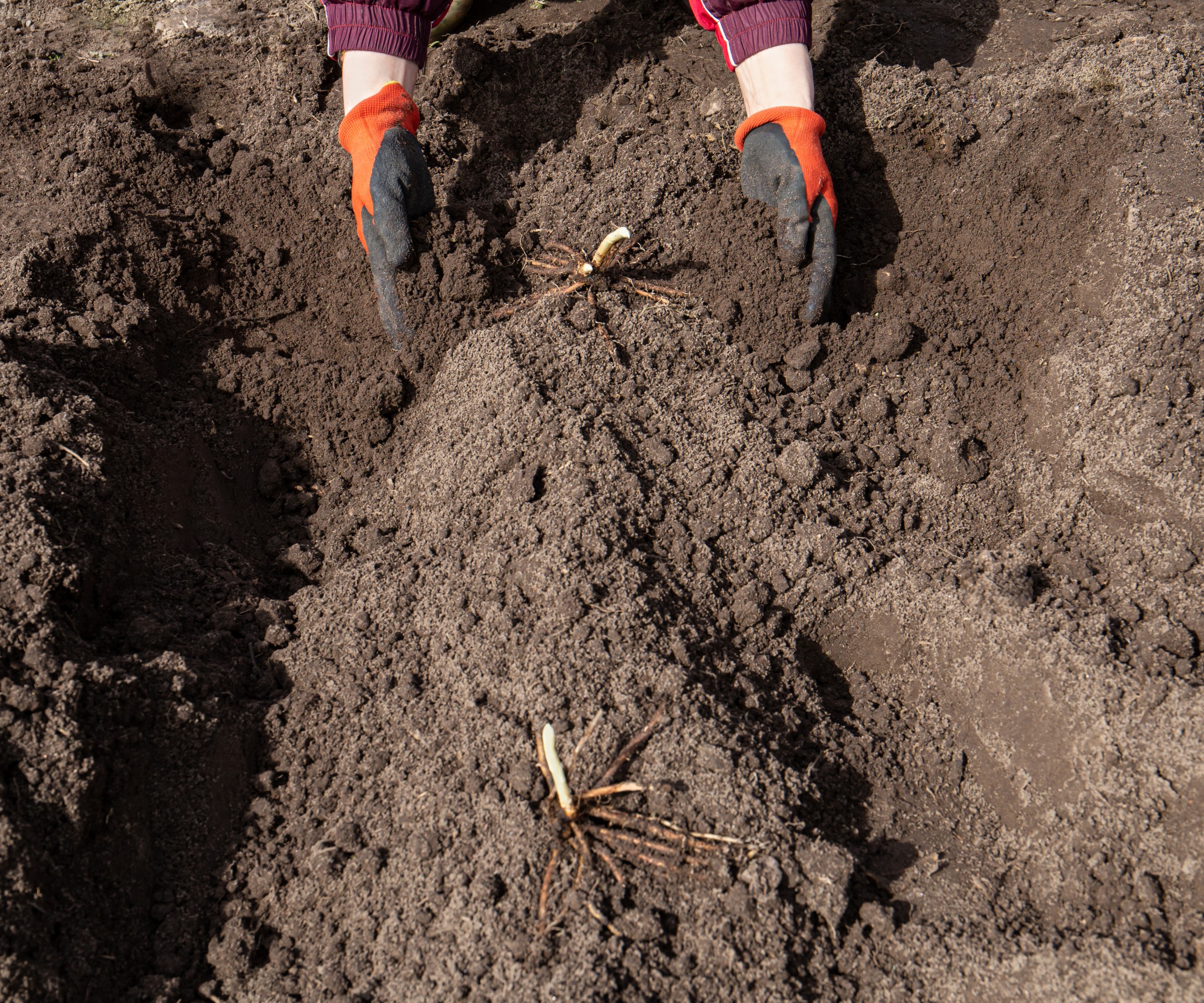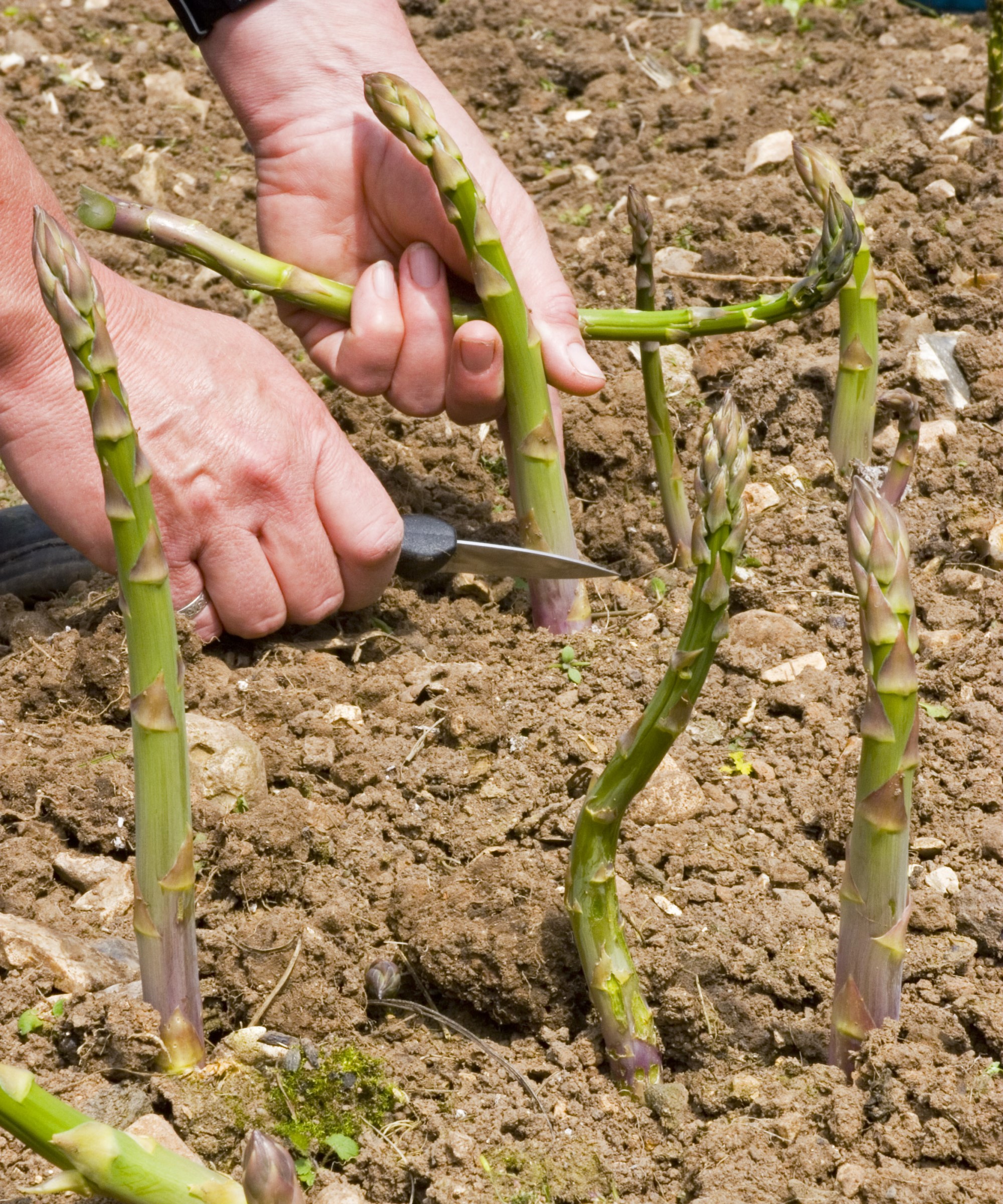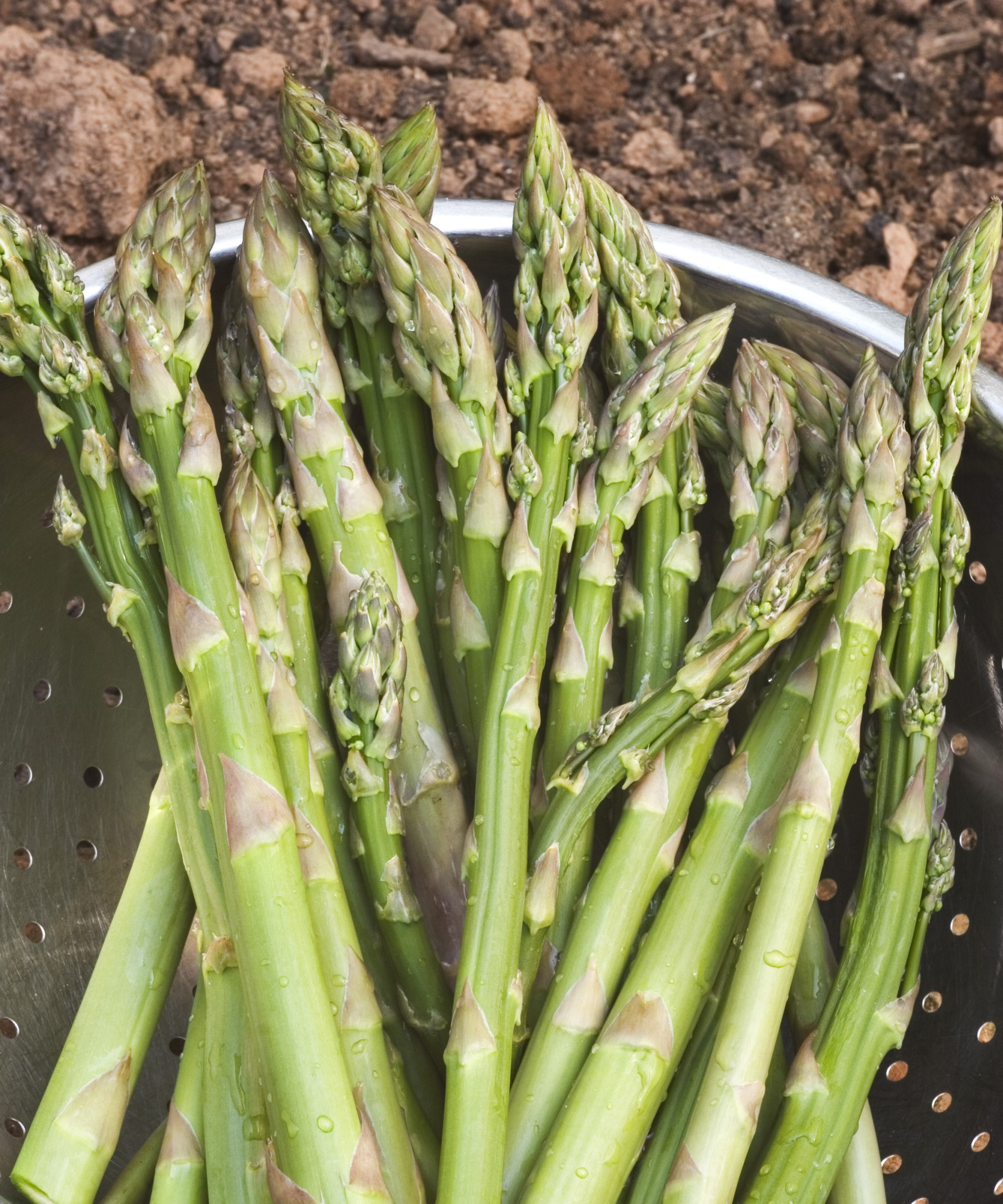How and when to fertilize asparagus – enjoy flavorful stalks year after year
If fertilized correctly, asparagus crowns are capable of producing a harvest of stems annually for up to 20 years


Asparagus is a spring delicacy and its tender stems are a treat during the perennial plant’s brief cropping season each year. It takes patience to grow asparagus and you need to look after the crowns to keep them performing at their best.
An established asparagus crown can provide a harvest for many, many years. It is a relatively heavy-feeder that does need fertilizing at least once each year, traditionally in spring.
Mastering how to grow asparagus to its full means knowing when to fertilize the crowns as part of an annual care regime. This is key to keeping the crowns productive for the longest time possible, which can potentially mean decades of tasty and tender spears.

The asparagus season starts in spring

Drew is a journalist and former professional gardener. He worked in productive kitchen gardens in the UK growing a wide range of vegetables year-round for chefs.
When is the best time to fertilize asparagus?
The best time to fertilize asparagus is in the late winter or early spring, just before new growth begins to emerge. This gives plants the energy and nutrients it needs to produce shoots over the growing season. Asparagus can also be fed later in the season, after the last harvest.
Growers need to be patient in growing asparagus, as there is no asparagus harvest for the first three years after planting asparagus. The objective for fertilizing for the first three years is to provide nutrients to grow strong stems and develop roots. After this, once the spears start to be harvested, the addition of fertilizer is to maintain the overall productivity of the crowns and to keep them cropping year-after-year.
You can buy asparagus crowns at Burpee and Nature Hills.

Asparagus crowns are planted on mounds in trenches lined with manure or compost
Fertilizing asparagus in spring
Newly planted crowns need a dose of fertilizer in early spring to encourage root growth and plant development. This helps the plant become fully established for the first three years after planting.
Christine Walkden, gardening expert for Amateur Gardening, recommends that both new and established asparagus crowns should be fed just before they start pushing their first spears of the season through the earth in spring. She says: ‘Every late March, apply a top dressing of a general fertilizer to the bed and lightly fork into the soil. Continue this every year until the bed is exhausted, which can be as long as 20 years later.’ The Dr Earth organic all-purpose fertilizer at Amazon would be ideal for working into the vegetable bed in spring.

Asparagus spears are cut just below ground level
Fertilizing asparagus in summer
Established crowns can also be fertilized after the last harvest, usually in June, with a high-phosphorus fertilizer – such as Jobe’s Organics Bone Meal from Walmart – or one high in potassium.
This application can encourage the growth of the fern – when the asparagus is left to send out foliage at the end of the harvesting season. This process produces and stores nutrients in the crown that is used for next year’s spears. By maximizing the growth of the foliage, more food is stored for the plant to use next spring.
Fertilizing asparagus in fall
At the end of the season, in the fall, it is time to cut the asparagus fern stems back. At this point you can add a mulch of compost or well-rotted manure to the crowns. This can help build up organic matter in the soil, which helps with retaining moisture and nutrients in the soil going forward.

Regular picking of harvesting produces the best spears
Choosing the right type of fertilizer for asparagus
There are several good options of fertilizers for asparagus, this includes manure, compost, and blood meal. Any fertilizer for asparagus needs to have good levels of nitrogen, to promote vegetative growth, and phosphorus, for root development. Blood meal is high in nitrogen, while manure and compost provide a balanced source of nutrients that release their goodness slowly over time.
Lindsey Hyland, founder of Urban Organic Yield, recommends fertilizing asparagus when the plants are actively growing, saying: ‘The best fertilizer for asparagus is an organic, slow-release balanced fertilizer with a ratio of 10-10-10 or 5-10-5 or 8-8-8.
‘This will provide the ferns with nitrogen, phosphorus and potassium in the correct proportions needed for optimal growth. A well-fertilized asparagus bed will produce tender, flavorful stalks year after year.’ A good example of the ideal fertilizer is the Expert Gardener All Purpose Plant Fertilizer from Walmart.
How to fertilize asparagus
When fertilizing asparagus, take care not to allow the plant to have direct contact with the fertilizer. Applying fertilizer directly to the crown can damage the plants.
The best method is to spread any fertilizer around the base of the plants and then gently work it into the soil. This broadcasting method works well for slow-release fertilizers – such as this Shake 'N Feed All Purpose Plant Food on Amazon. For other fast-acting fertilizers, such as blood meal, it is advisable to make a narrow trench to sprinkle the fertilizer in and cover with soil. Then make sure to water the area well.

Spears should be harvested at 6-10 inches long
FAQs
Is manure a good fertilizer for asparagus?
Well-rotted manure can be used as a feed on asparagus. Chicken manure, horse manure, and sheep manure are all good for asparagus. It is commonly added at the bottom of the planting trench for asparagus but can also be applied as an effective type of mulch.
Manure is best used as a fertilizer after the harvest has ended and any manure used for mulching needs to be well-rotted. The addition of raw manure is to be avoided after the crowns have been planted. The high level of ammonia in some manure, such as chicken manure, can burn the crowns if put straight on them.
Is blood and bone good for asparagus?
Blood and bone is ideal for asparagus as it is high in phosphorus and nitrogen. It should be spread in spring, just before new growth begins. Blood and bone can also be used prior to planting asparagus crowns, adding a handful to the trench along with some well-rotted manure or garden compost.
Is wood ash good for asparagus?
Wood ash can add potassium to the soil when used in the vegetable garden and can be very beneficial for asparagus. It needs to be used sparingly as wood ash is high in pH and could raise the soil pH if used in bulk. Best practice when using ashes in the garden is to mix the wood ash with other types of fertilizer, such as compost, to help give plants a balanced nutrient supply.
Are coffee grounds good as an asparagus fertilizer?
Coffee grounds can be a good way to add nitrogen into the soil but are very acidic so would be too acidic to be used directly on asparagus crowns on their own. To use coffee grounds on asparagus, it would be best to mix them in with other waste from the kitchen or garden when planning how to make compost for the garden. This way it would help ensure the soil’s pH level was not altered.
Sign up to the Homes & Gardens newsletter
Design expertise in your inbox – from inspiring decorating ideas and beautiful celebrity homes to practical gardening advice and shopping round-ups.

Drew’s passion for gardening started with growing vegetables and salad in raised beds in a small urban terrace garden. He has worked as a professional gardener in historic gardens and specialises in growing vegetables, fruit, herbs, and cut flowers as a kitchen gardener. That passion for growing extends to being an allotmenteer, garden blogger, and producing how-to gardening guides for websites. Drew was shortlisted for the New Talent of the Year award at the 2023 Garden Media Guild Awards.
-
 I'm 5ft2 and this telescopic scrubber safely and easily banished mold and grime in even the hardest-to-reach areas of my bathroom in less than 15 minutes
I'm 5ft2 and this telescopic scrubber safely and easily banished mold and grime in even the hardest-to-reach areas of my bathroom in less than 15 minutesMy bathroom has never looked better thanks to this handy $16 two-in-one tool from Joseph Joseph
By Ottilie Blackhall Published
-
 Everyone is obsessed with vintage tiles right now – bring the nostalgic charm of this classic design feature into your home with our 5 design ideas
Everyone is obsessed with vintage tiles right now – bring the nostalgic charm of this classic design feature into your home with our 5 design ideasHonor the past with our favorite ways to decorate with vintage tiles, as suggested by interior design experts
By Eleanor Richardson Published